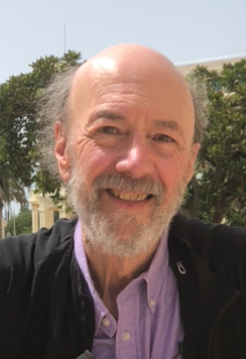
By
Jeff Williams
Print Version
What you need to know
In recent years, researchers have proposed new ways of presenting Einstein’s theory of gravity, the theory of general relativity, in the hope of gaining a fresh perspective on some longstanding problems—for example, how to merge general relativity with quantum theory. One of these new approaches is called the null-surface formulation of general relativity. In this approach, one considers light beams or light trajectories or, better still, the surfaces that are defined by light trajectories running alongside each other. Instead of a theory of forces or of fields, one has a theory of surfaces: geometry. My colleague, Dr. Tina Harriott from Mount Saint Vincent University, and I are working on the null-surface formulation with the goal of discovering solutions of the fundamental equations.
Why this research is important
When he was a boy, Einstein wondered how the world would look if he could travel on a beam of light. Much later, he found the answer: The world would look as if time was standing still. Nothing happens. Hence the term ‘null surface.’ The event horizons of black holes are important examples of null surfaces and provide a link between gravity and the rest of physics through black hole entropy (connecting with thermodynamics, statistical mechanics, and information theory) and Hawking radiation (connecting with particle physics and quantum field theory). Unlike the usual version of general relativity where one works with distance metrics, in the null-surface formulation one works directly with the surfaces. The null surfaces are, themselves, the basic variables. Such a different viewpoint could offer additional insights into event horizons and relativity in general.
How this research was conducted
The fundamental equations of the null-surface formulation of general relativity are complicated. Hidden in their mathematics are hundreds of solutions, that is to say, mathematical functions that satisfy the equations and make them valid. Each one of these solutions or functions describes a galaxy or a star or universe, which may or may not correspond to any of the galaxies or stars we know or to the universe we see around us. We began our search for solutions in a pretend world of only two space dimensions and, of course, one dimension of time: 2+1. (The real world of 3+1 dimensions was far too daunting.) Physicists and mathematicians delight in choosing Greek letters to name their most cryptic concepts. Think of the Ψ (psi) of quantum mechanics that plagued Schrödinger’s unfortunate cat. In the null formulation, we were seeking a function named Λ (lambda). We knew there would be hundreds of different Λs. We needed to find at least one of them and, for simplicity, we assumed that Λ depended upon a single spacetime variable. Picture it as a variable that runs along Einstein’s light beam and call the variable ‘r.’ This was the first step, the beginning of the calculation.
What the researchers found
We found a solution. It is Λ = √(r2 + r + 1)3. It was the first solution that anyone has found and is published in the journal General Relativity and Gravitation and in the proceedings of a general relativity conference held in Prague. (See the publications listed below.) This solution describes a universe that contains matter and is rotating like a gigantic whirlpool. Of course, it is only a make-believe universe and exists only in 2+1 dimensions. This past spring, we discovered a second solution, vastly more complicated than the first. This solution describes a universe that is expanding, like our own, and has an all-pervading scalar field (think of the Higgs field), like our own. This latest universe is still in 2+1 dimensions, but its structure suggests a way to broaden our approach and extend the general framework into 3+1 dimensions.
How this research can be used
Any solution of the null-surface formulation’s equations will serve as a demonstration of the formalism and might reveal previously unknown solutions in regular general relativity. That is the case for the Λ given above.
Acknowledgements
This research was supported by the Brandon University Research Committee during the early stages of the project. The hospitality of the University of Pittsburgh is gratefully acknowledged.
About the Researcher
Keywords
- general relativity
- gravity
- null-surface formulation
Publications Based on the Research
Harriott, T. A., & Williams, J. G. (2014). Solution for the null-surface formulation of general relativity in 2+1 dimensions. General Relativity and Gravitation, 46, 1666.
Harriott, T. A., & Williams, J. G. (2014). Solutions in the 2+1 null-surface formulation. In J. Bičák & T. Ledvinka (Eds.), Relativity and Gravitation—100 Years After Einstein in Prague (pp. 283—286). Springer.
Editor: Christiane Ramsey
Read more BU Research
Research at Brandon University follows comprehensive policies designed to safeguard ethics, to ensure academic integrity, to protect human and animal welfare and to prevent conflicts of interest.

